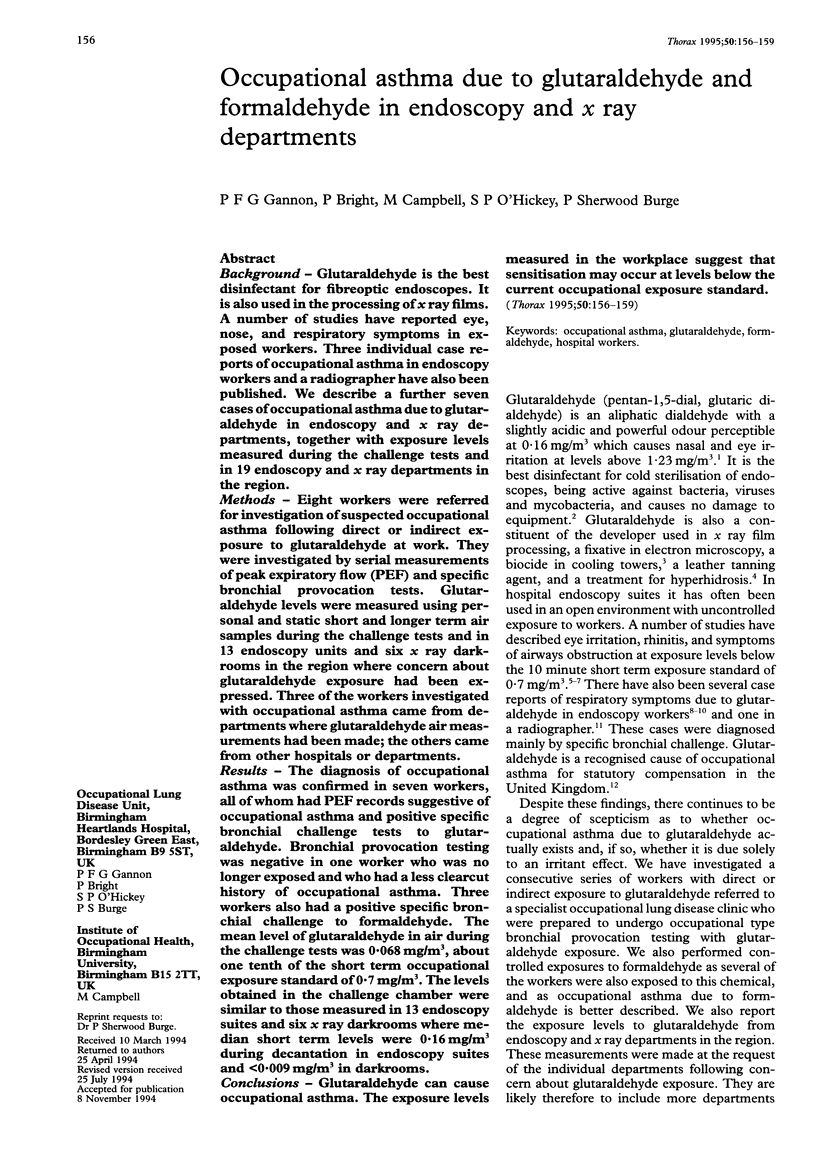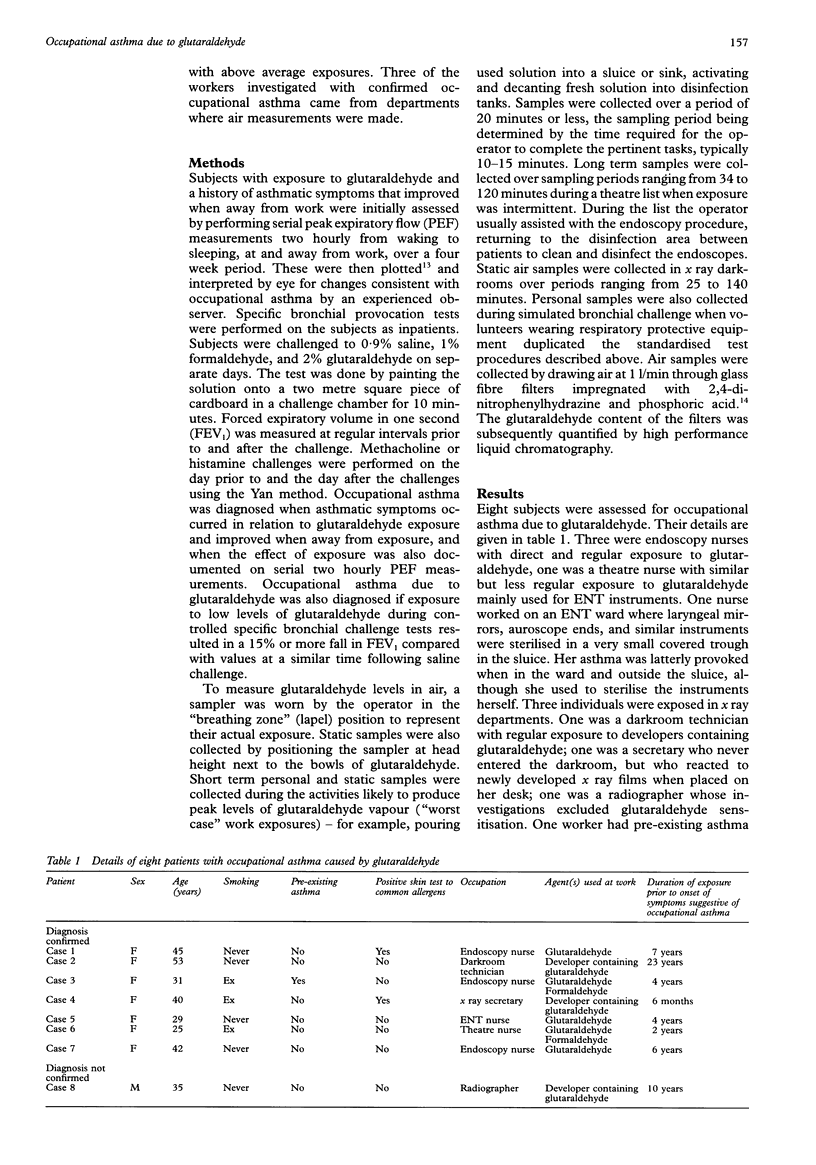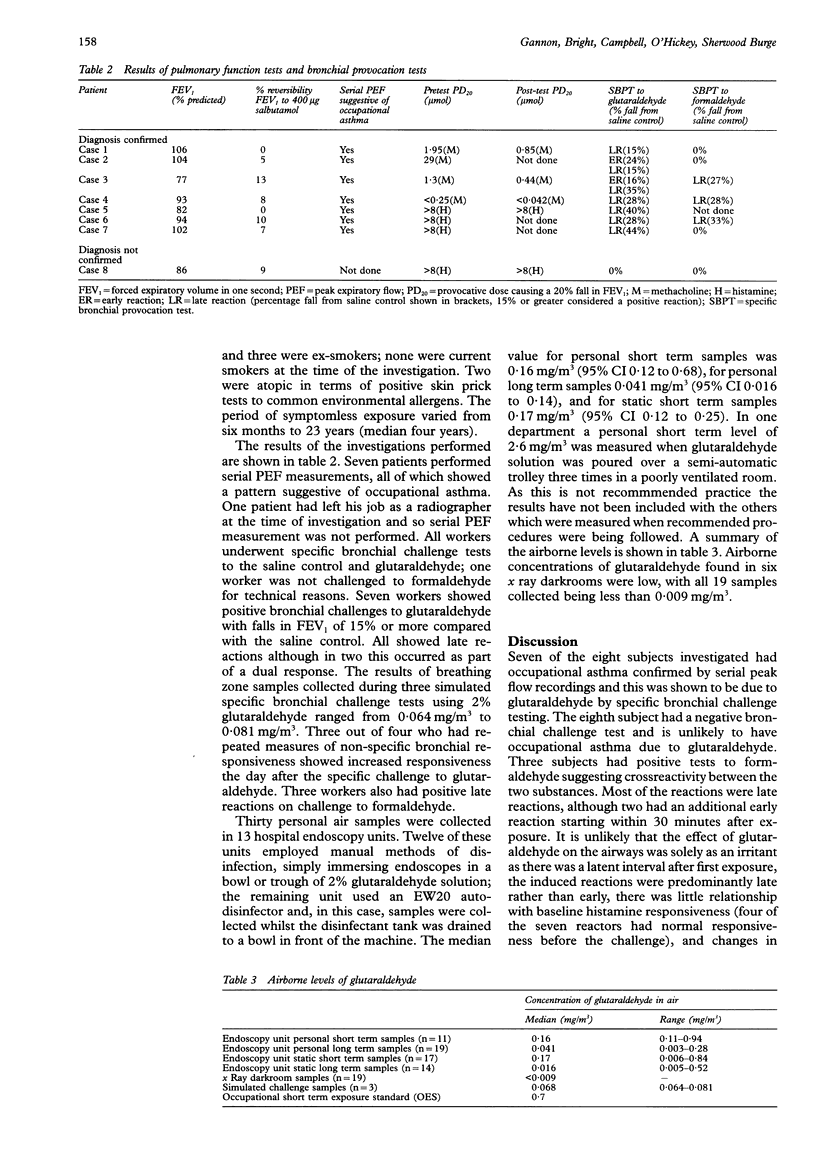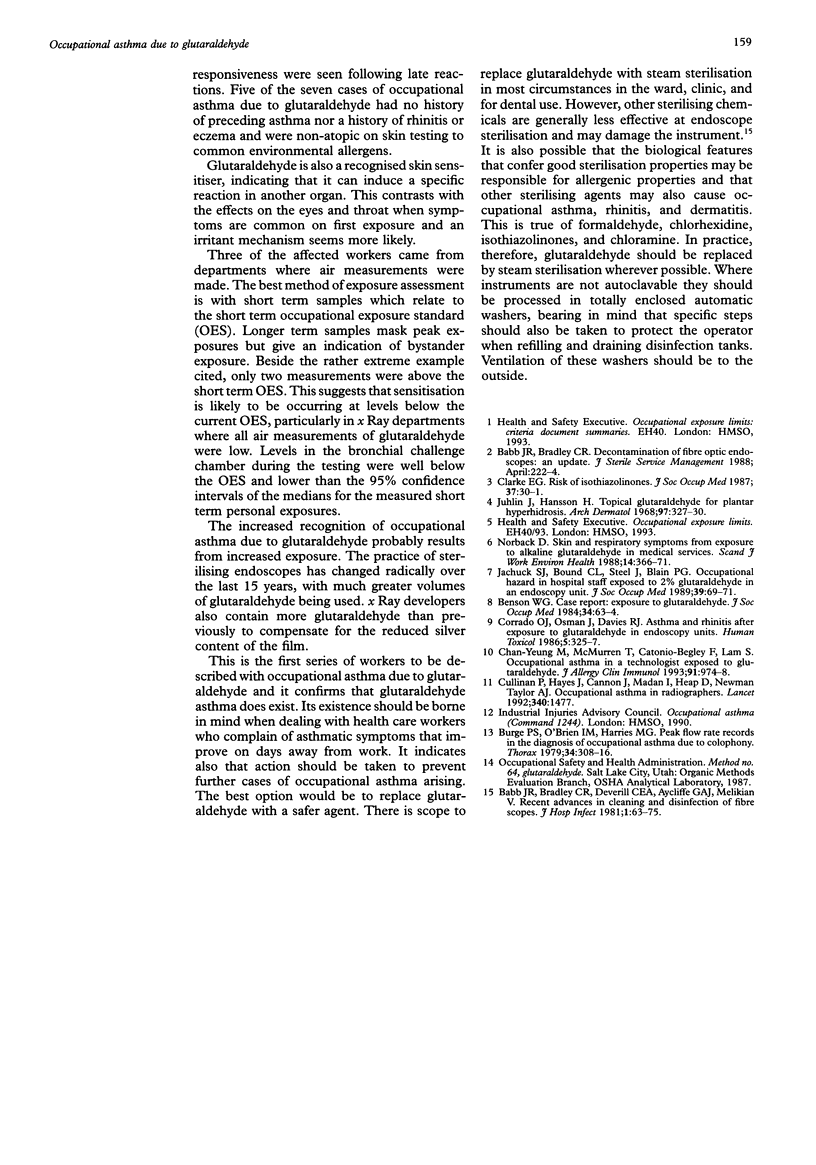Abstract
BACKGROUND--Glutaraldehyde is the best disinfectant for fibreoptic endoscopes. It is also used in the processing of x ray films. A number of studies have reported eye, nose, and respiratory symptoms in exposed workers. Three individual case reports of occupational asthma in endoscopy workers and a radiographer have also been published. We describe a further seven cases of occupational asthma due to glutaraldehyde in endoscopy and x ray departments, together with exposure levels measured during the challenge tests and in 19 endoscopy and x ray departments in the region. METHODS--Eight workers were referred for investigation of suspected occupational asthma following direct or indirect exposure to glutaraldehyde at work. They were investigated by serial measurements of peak expiratory flow (PEF) and specific bronchial provocation tests. Glutaraldehyde levels were measured using personal and static short and longer term air samples during the challenge tests and in 13 endoscopy units and six x ray darkrooms in the region where concern about glutaraldehyde exposure had been expressed. Three of the workers investigated with occupational asthma came from departments where glutaraldehyde air measurements had been made; the others came from other hospitals or departments. RESULTS--The diagnosis of occupational asthma was confirmed in seven workers, all of whom had PEF records suggestive of occupational asthma and positive specific bronchial challenge tests to glutaraldehyde. Bronchial provocation testing was negative in one worker who was no longer exposed and who had a less clearcut history of occupational asthma. Three workers also had a positive specific bronchial challenge to formaldehyde. The mean level of glutaraldehyde in air during the challenge tests was 0.068 mg/m3, about one tenth of the short term occupational exposure standard of 0.7 mg/m3. The levels obtained in the challenge chamber were similar to those measured in 13 endoscopy suites and six x ray darkrooms where median short term levels were 0.16 mg/m3 during decantation in endoscopy suites and < 0.009 mg/m3 in darkrooms. CONCLUSIONS--Glutaraldehyde can cause occupational asthma. The exposure levels measured in the workplace suggest that sensitisation may occur at levels below the current occupational exposure standard.
Full text
PDF



Selected References
These references are in PubMed. This may not be the complete list of references from this article.
- Babb J. R., Bradley C. R., Ayliffe G. A. Sporicidal activity of glutaraldehydes and hypochlorites and other factors influencing their selection for the treatment of medical equipment. J Hosp Infect. 1980 Mar;1(1):63–75. doi: 10.1016/0195-6701(80)90033-x. [DOI] [PubMed] [Google Scholar]
- Burge P. S., O'Brien I. M., Harries M. G. Peak flow rate records in the diagnosis of occupational asthma due to colophony. Thorax. 1979 Jun;34(3):308–316. doi: 10.1136/thx.34.3.308. [DOI] [PMC free article] [PubMed] [Google Scholar]
- Chan-Yeung M., McMurren T., Catonio-Begley F., Lam S. Occupational asthma in a technologist exposed to glutaraldehyde. J Allergy Clin Immunol. 1993 May;91(5):974–978. doi: 10.1016/0091-6749(93)90209-x. [DOI] [PubMed] [Google Scholar]
- Clark E. G. Risk of isothiazolinones. J Soc Occup Med. 1987 Spring;37(1):30–31. doi: 10.1093/occmed/37.1.30. [DOI] [PubMed] [Google Scholar]
- Corrado O. J., Osman J., Davies R. J. Asthma and rhinitis after exposure to glutaraldehyde in endoscopy units. Hum Toxicol. 1986 Sep;5(5):325–328. doi: 10.1177/096032718600500505. [DOI] [PubMed] [Google Scholar]
- Cullinan P., Hayes J., Cannon J., Madan I., Heap D., Taylor A. N. Occupational asthma in radiographers. Lancet. 1992 Dec 12;340(8833):1477–1477. doi: 10.1016/0140-6736(92)92675-6. [DOI] [PubMed] [Google Scholar]
- Cullinan P., Hayes J., Cannon J., Madan I., Heap D., Taylor A. N. Occupational asthma in radiographers. Lancet. 1992 Dec 12;340(8833):1477–1477. doi: 10.1016/0140-6736(92)92675-6. [DOI] [PubMed] [Google Scholar]
- Jachuck S. J., Bound C. L., Steel J., Blain P. G. Occupational hazard in hospital staff exposed to 2 per cent glutaraldehyde in an endoscopy unit. J Soc Occup Med. 1989 Summer;39(2):69–71. doi: 10.1093/occmed/39.2.69. [DOI] [PubMed] [Google Scholar]
- Juhlin L., Hansson H. Topical glutaraldehyde for plantar hyperhidrosis. Arch Dermatol. 1968 Mar;97(3):327–330. [PubMed] [Google Scholar]
- Norbäck D. Skin and respiratory symptoms from exposure to alkaline glutaraldehyde in medical services. Scand J Work Environ Health. 1988 Dec;14(6):366–371. [PubMed] [Google Scholar]


